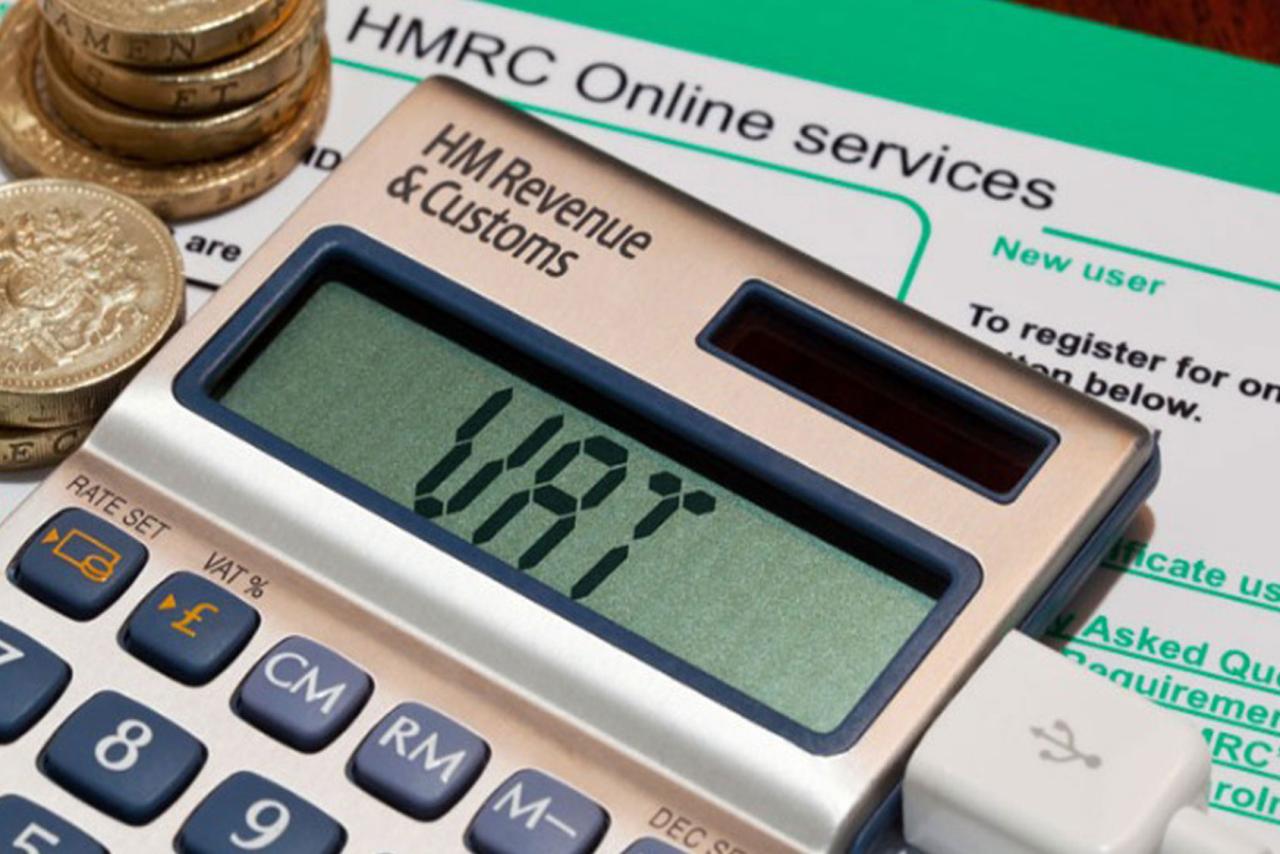
UK Digital Tax Collection A Deep Dive
UK digital tax collection is rapidly evolving, impacting taxpayers, businesses, and the HMRC. This introduction explores the history, current landscape, and future of digital tax systems in the UK, examining the challenges, opportunities, and taxpayer experience. From the various platforms used to the security considerations, we’ll delve into the intricacies of this transformative process.
The current methods of digital tax collection in the UK range from online portals for filing returns to automated systems for payments. This evolution reflects a global trend toward digitalization in public services. Understanding the nuances of this transition is crucial for both citizens and businesses navigating the modern tax landscape.
Introduction to UK Digital Tax Collection
Digital tax collection in the UK is rapidly evolving, driven by the need for efficiency, transparency, and wider accessibility. This shift towards digital methods has seen a significant increase in the use of online platforms and technologies for submitting tax returns, paying taxes, and interacting with HMRC (Her Majesty’s Revenue and Customs). This evolution has its roots in a long-standing desire to streamline the tax process, while also adapting to the changing needs of a modern society.The current landscape of digital tax collection in the UK is characterized by a variety of platforms and technologies that cater to different needs and tax types.
This range of options aims to improve accessibility and user experience, while simultaneously enhancing the security and accuracy of tax data collection. The methods are constantly being refined to address specific challenges and capitalize on emerging opportunities.
History of Digital Tax Collection in the UK
The UK’s journey towards digital tax collection began with the introduction of online tax filing options, initially as a supplementary service. Over time, these online platforms have become increasingly sophisticated, offering more functionalities and encompassing a broader range of tax types. The impetus for this evolution has been driven by the need for increased efficiency and the recognition of the potential of technology to enhance public service delivery.
Early adopters saw a significant reduction in administrative burden and improved tax compliance.
Current Landscape of Digital Tax Collection Methods
The current digital tax collection landscape in the UK is diverse. It encompasses various online portals, mobile applications, and APIs (Application Programming Interfaces) that facilitate interaction with HMRC. This diverse approach allows for a tailored experience for different taxpayers, catering to their individual needs and technical capabilities. This diversity is a testament to the government’s commitment to providing multiple access points to tax services.
Digital Platforms and Technologies Used
HMRC employs a range of digital platforms and technologies for tax collection. These include secure online portals for filing tax returns, mobile apps for paying taxes, and automated systems for processing tax data. This multifaceted approach allows for a more efficient and user-friendly tax experience. The use of these platforms has led to improved taxpayer engagement and a significant reduction in the volume of manual paperwork.
Key Challenges and Opportunities
Digital tax collection in the UK, while offering significant advantages, also presents certain challenges. Ensuring the security and privacy of sensitive taxpayer data is paramount. Addressing digital literacy gaps among certain demographics is crucial to ensuring equitable access. These challenges are balanced by the opportunities to improve transparency, enhance tax compliance, and broaden accessibility. The evolving nature of digital technologies provides opportunities to adapt and improve the tax system in real-time.
Digital Tax Collection Methods: Advantages, Disadvantages, and Examples
| Digital Tax Collection Method | Advantages | Disadvantages | Examples in the UK |
|---|---|---|---|
| Online Tax Filing Portals | Convenience, accessibility, reduced paperwork | Potential for technical glitches, digital literacy barriers | HMRC’s online portal for self-assessment |
| Mobile Tax Apps | Accessibility, real-time updates, convenience | Security concerns, reliance on mobile devices | HMRC’s mobile app for tax payments |
| Automated Tax Processing Systems | Increased efficiency, reduced errors, faster processing times | Potential for system failures, need for robust backup systems | HMRC’s automated systems for PAYE (Pay As You Earn) processing |
| API-based Tax Integrations | Enhanced integration with other financial systems, improved data accuracy | Complexity in implementation, potential for security vulnerabilities | Integration of payroll systems with HMRC’s API for real-time tax calculations |
Challenges and Opportunities in Digital Tax Collection

The UK’s move towards digital tax collection presents a significant opportunity to streamline processes and improve efficiency. However, transitioning to a fully digital system faces hurdles that need careful consideration. This shift promises greater transparency and potentially lower administrative costs, but also introduces new security concerns and requires adjustments across various stakeholders.This section explores the major obstacles, potential benefits, and security concerns associated with digital tax collection in the UK, examining its impact on taxpayers, HMRC, and businesses.
It also provides a comparative analysis of current and potential future methods, emphasizing the importance of robust security measures and user-friendliness.
Major Obstacles to Successful Digital Tax Collection
The transition to digital tax collection faces several challenges. Technical infrastructure, particularly in reaching all demographics, is a crucial element. Digital literacy and access to reliable internet connectivity for a significant portion of the UK population must be considered. This also includes the digital divide, with some individuals lacking the necessary skills or resources to engage effectively with online tax services.
Furthermore, existing systems and processes may need substantial modification to seamlessly integrate with new digital platforms. The potential for errors in data entry and processing is another critical consideration.
Potential Benefits of Digital Tax Collection
Digital tax collection offers numerous advantages. Improved efficiency in data processing and tax calculation are possible, potentially reducing administrative burdens and costs for both HMRC and taxpayers. Real-time reporting and analysis can allow for quicker identification of discrepancies and potential tax evasion. Greater transparency and accessibility to tax information for both HMRC and taxpayers are also possible.
Increased automation of routine tasks can lead to significant savings in personnel costs and resources. The implementation of digital solutions, in theory, should lead to increased accuracy in tax collection.
Security Concerns Associated with Digital Tax Collection, Uk digital tax collection
Digital tax collection necessitates robust security measures to protect sensitive taxpayer data. Cybersecurity threats, such as phishing attacks, malware, and data breaches, pose a significant risk. Protecting taxpayer information is paramount to maintain public trust. Ensuring the security and integrity of the entire digital infrastructure is crucial to prevent unauthorized access or manipulation of tax data. The need for robust encryption and secure authentication methods is paramount.
Impact on Stakeholders
Digital tax collection will have varying effects on different stakeholders. For taxpayers, the process could become more convenient, with potentially quicker processing of returns and reduced paperwork. However, concerns about data privacy and security must be addressed to ensure confidence. HMRC would benefit from streamlined operations and potentially improved revenue collection. Businesses, especially those with digital operations, could face challenges in adapting to new reporting requirements, but also potential benefits from easier access to tax information and potentially lower compliance costs.
Comparison of Current and Future Digital Tax Collection Methods
| Aspect | Current Methods | Potential Future Methods |
|---|---|---|
| Security Measures | Traditional paper-based systems, with limited digital tools, potentially lacking advanced encryption | Advanced encryption, multi-factor authentication, robust cybersecurity protocols, secure cloud storage |
| Ease of Use | Can be cumbersome and time-consuming, varying significantly based on individual’s access to digital resources. | Potential for simplified processes, self-service options, and intuitive interfaces to enhance user experience |
| Data Management | Manual data entry and processing, potentially prone to errors. Limited data analysis tools. | Automated data collection, processing, and analysis tools, leading to more efficient and accurate tax administration |
| Accessibility | Limited accessibility for all demographics due to digital divide. Some services may only be accessible during specific business hours. | Enhanced accessibility via various digital channels and platforms, potentially enabling round-the-clock access. Adapting interfaces to multiple languages and needs. |
Taxpayer Experience and Engagement

The success of any digital tax collection system hinges on providing a positive and intuitive experience for taxpayers. A user-friendly platform fosters trust and encourages compliance. This section details the digital tools and services available to UK taxpayers, along with strategies for enhancing engagement and compliance.A robust digital tax system empowers taxpayers to manage their obligations effectively, saving time and reducing administrative burdens.
This, in turn, leads to increased trust in the tax authority and a smoother overall experience.
Digital Tools and Services for UK Taxpayers
A variety of digital tools and services are available to UK taxpayers, facilitating the management of tax obligations. These range from online portals for filing returns and paying taxes to dedicated mobile applications. The HMRC (Her Majesty’s Revenue and Customs) website provides a comprehensive resource for accessing these tools. Taxpayers can access online services such as self-assessment, tax credits, and paying tax bills.
User Experience (UX) Considerations
Effective UX design is crucial for digital tax systems. Key considerations include intuitive navigation, clear and concise information presentation, secure data handling, and accessibility features for diverse user needs. The platform should be simple to use, even for those unfamiliar with technology. Furthermore, the design should consider different levels of technical proficiency among users. Security is paramount, with strong encryption and authentication methods to protect sensitive taxpayer data.
The system should also be accessible to those with disabilities.
Methods for Enhancing Taxpayer Engagement and Compliance
Active engagement with taxpayers is essential for promoting compliance and reducing tax evasion. Regular communication about new features, updates, and changes in tax laws can help taxpayers stay informed and maintain their compliance. Clear communication channels, such as dedicated FAQs and interactive tutorials, are crucial for addressing common questions and concerns. These methods not only ensure understanding but also encourage proactive participation in the tax process.
Effective Communication Strategies
Clear and consistent communication is key to educating taxpayers about digital tax collection methods. The use of multiple communication channels, such as email newsletters, social media campaigns, and dedicated FAQs on the HMRC website, ensures broader reach and engagement. These platforms should provide clear and concise information, avoiding complex jargon and legal terminology. Visual aids, such as infographics and videos, can be particularly effective in conveying complex information in an easily digestible format.
Table of Taxpayer Engagement Strategies
| Engagement Strategy | Effectiveness | Specific Tools Used |
|---|---|---|
| Regular email newsletters | High; keeps taxpayers informed about updates and changes. | Email marketing platforms, targeted email campaigns. |
| Social media campaigns | Medium; reaches a broad audience but needs careful targeting. | Dedicated social media accounts, targeted ads. |
| Interactive tutorials and FAQs | High; provides readily accessible support and guidance. | Online tutorials, FAQs on the HMRC website, chatbot assistance. |
| Webinars and online Q&A sessions | High; facilitates real-time interaction and addresses specific concerns. | Webinar platforms, online chat features. |
| Personalized tax reminders | High; encourages timely filing and payment. | Automated email reminders, SMS alerts. |
HMRC’s Role in Digital Tax Collection: Uk Digital Tax Collection
The UK’s tax collection agency, HMRC, plays a crucial role in driving the digital transformation of the tax system. This shift is vital for efficiency, accuracy, and improved taxpayer experience. Digital tools and platforms are essential for managing the vast volume of tax transactions and interactions with taxpayers.HMRC is proactively implementing digital solutions to streamline processes, reduce errors, and improve overall efficiency.
This modern approach not only enhances the taxpayer experience but also allows for greater compliance and reduced administrative burden.
HMRC’s Role in Driving Digital Transformation
HMRC has a strategic focus on leveraging technology to revolutionize tax collection. This involves developing user-friendly online portals, mobile applications, and other digital channels to interact with taxpayers. The agency is also investing in advanced data analytics and automation to enhance accuracy and identify potential tax risks.
Technological Infrastructure Supporting Digital Tax Collection
HMRC’s technological infrastructure comprises a complex network of systems and databases. This infrastructure is designed to handle a massive volume of transactions, securely store sensitive taxpayer data, and enable seamless communication across various channels. The agency employs robust security measures to protect taxpayer information and ensure the integrity of the digital tax collection process. This includes advanced encryption protocols and multi-factor authentication systems.
Furthermore, HMRC is committed to data governance and compliance with relevant regulations.
Strategies for Secure and Reliable Digital Tax Collection
HMRC prioritizes security and reliability in its digital tax collection strategies. These strategies encompass multiple layers of protection, including secure data storage, robust authentication procedures, and regular security audits. The agency employs cutting-edge cybersecurity measures to prevent fraud and unauthorized access to sensitive taxpayer information. Regular security updates and continuous monitoring of systems are integral components of this approach.
HMRC’s Initiatives to Improve Digital Tax Services
HMRC consistently introduces new initiatives to enhance the digital tax experience for taxpayers. These initiatives include the development of user-friendly online portals, mobile applications, and automated services. These improvements aim to simplify the tax process, provide instant feedback, and offer accessible support options. For example, the online tax account management tools provide taxpayers with greater control over their tax information.
Additionally, HMRC actively seeks feedback from taxpayers to refine its digital services.
Examples of Technological Advancements
| Technological Advancement | Impact | Benefits |
|---|---|---|
| Automated tax calculation and filing tools | Reduces manual errors and speeds up processing | Improved accuracy, faster turnaround times, and reduced administrative costs. |
| Data analytics for fraud detection | Identifies suspicious patterns and activities | Increased compliance, reduced tax evasion, and enhanced security. |
| Digital platforms for self-service tax declarations | Provides taxpayers with greater control and flexibility | Reduced processing time for taxpayers, increased efficiency for HMRC. |
| Mobile tax apps for on-the-go services | Allows taxpayers to access and manage tax information anytime, anywhere | Improved accessibility, convenience, and responsiveness. |
Future Trends and Innovations
The digital landscape is constantly evolving, and these changes are poised to reshape tax collection globally. The UK, as a digitally advanced nation, must adapt its tax collection systems to remain efficient and effective. This includes embracing new technologies and innovations to streamline processes, enhance taxpayer experience, and combat tax evasion.The future of digital tax collection hinges on the adoption of innovative technologies, offering the potential for increased efficiency, reduced costs, and improved taxpayer engagement.
These advancements can revolutionize how the UK collects taxes, fostering a more streamlined and user-friendly experience for taxpayers.
Emerging Trends in Global Digital Tax Collection
The global trend in digital tax collection is towards automation and data-driven insights. Countries are increasingly exploring ways to leverage technology to enhance tax compliance, improve revenue collection, and reduce the administrative burden on both taxpayers and tax authorities. This is driven by the need for more efficient and effective tax systems in a rapidly changing economic environment.
Artificial Intelligence and Machine Learning in UK Tax Collection
AI and machine learning (ML) are transforming various industries, and tax collection is no exception. AI can analyze large datasets to identify patterns, anomalies, and potential tax evasion risks. ML algorithms can be trained to predict future tax liabilities and proactively identify taxpayers who may be at risk of non-compliance. This proactive approach can lead to early intervention and resolution of issues before they escalate.
The UK could utilize AI to automate routine tasks, such as data entry and processing, freeing up HMRC staff to focus on more complex issues.
Blockchain Technology in UK Tax Systems
Blockchain technology offers a secure and transparent way to record and verify transactions. In the context of tax collection, blockchain could be used to create a secure and tamper-proof record of tax payments. This can enhance transparency and trust between taxpayers and the tax authority. It could also help in tracking the movement of funds related to taxes, making it more difficult to evade taxes.
A potential example could be recording and verifying the payment of VAT on online transactions. This approach can streamline the process and ensure accurate recording of transactions.
Potential Use Cases and Challenges
| Trend/Innovation | Description | Illustration | Challenges | Benefits |
|---|---|---|---|---|
| AI/ML | Automated tax assessment, risk assessment, fraud detection, proactive compliance support | Predictive models for identifying high-risk taxpayers; automated processing of routine tax returns | Data privacy concerns; potential bias in algorithms; need for skilled personnel | Reduced processing time; improved accuracy; enhanced efficiency |
| Blockchain | Secure, transparent record-keeping of transactions, enhanced traceability, reduced fraud | Securely recording and verifying VAT payments on e-commerce platforms; tracking cross-border transactions | Complexity of implementation; scalability issues; potential regulatory hurdles | Improved transparency and trust; enhanced security; reduced costs |
| Mobile Tax Collection | Taxpayers can access and manage their tax information and file returns through mobile apps | Taxpayers can pay taxes, view statements, and file returns using mobile devices | Ensuring data security and privacy; addressing technological disparities among taxpayers | Increased accessibility and convenience for taxpayers; faster turnaround times for payments |
| Big Data Analytics | Leveraging large datasets to identify trends, patterns, and potential tax evasion activities | Analyzing transaction data from various sources to identify suspicious activity | Data privacy and security concerns; potential for misuse of taxpayer data | Early detection of potential tax evasion; improved risk assessment; better resource allocation |
International Comparisons and Best Practices
The UK’s journey into digital tax collection benefits greatly from examining global best practices and learning from the experiences of other countries. Understanding the successes and pitfalls of digital tax systems elsewhere allows the UK to refine its approach, maximizing efficiency and minimizing potential roadblocks. A comparative analysis illuminates opportunities for improvement and provides valuable insights into how other nations are adapting to the digital age of taxation.
Comparative Analysis of Digital Tax Collection Methods
Different countries have adopted varying approaches to digital tax collection, reflecting diverse economic structures, technological capabilities, and cultural contexts. A critical comparison highlights the effectiveness and adaptability of these systems.
Examples of Successful Digital Tax Collection Systems
Several countries have successfully integrated digital tools into their tax collection processes. These successes provide valuable lessons for the UK’s development. For instance, Estonia, renowned for its digital governance, employs a robust online platform for tax filing and payment, significantly streamlining the process for citizens and authorities. Similarly, Australia’s myGov portal facilitates various government services, including tax management, demonstrating the potential of integrated digital platforms.
Best Practices Identified from Other Jurisdictions
Several key best practices emerge from examining international experiences. These include user-friendly interfaces for online tax filing, secure payment gateways, and robust data management systems. A notable example is the use of mobile-first applications for tax compliance in developing nations, allowing wider access and ease of interaction for a broader demographic.
Challenges Encountered in Other Countries
While digital tax collection offers numerous benefits, several challenges have been encountered globally. These include concerns about data security and privacy, resistance to change from traditional methods, and the need for adequate digital literacy training. Furthermore, discrepancies in the digital infrastructure across countries can create hurdles in adopting similar solutions.
Table Comparing Digital Tax Collection Methods
| Country | Digital Tax Collection Method | Effectiveness | Challenges |
|---|---|---|---|
| Estonia | Integrated online platform, mobile-first applications | High – Streamlined processes, reduced paperwork | High digital literacy required, potential data security concerns |
| Australia | myGov portal integrating tax services | High – Comprehensive access to services | Requires significant infrastructure investment, potential for system overload |
| Canada | Secure online portals, tax filing apps | Medium – Significant improvement, but some manual processes persist | Integration challenges with various provincial tax systems |
| United States | Variety of online portals, varying degrees of digital adoption | Medium – Significant variation based on state | Resistance to change from traditional methods, varying levels of digital literacy |
Last Recap
In conclusion, UK digital tax collection represents a significant shift towards a more efficient and potentially more user-friendly system. While challenges remain, the potential benefits for increased transparency, security, and accessibility are substantial. The future of digital tax collection in the UK will likely be shaped by emerging technologies and international best practices. Further research is needed to fully understand the long-term implications for taxpayers and the government.
FAQ Section

What are the most common digital tax platforms used in the UK?
The UK government uses various online portals and apps for different tax-related tasks, including filing returns, making payments, and accessing tax information. Specific platforms may vary depending on the type of tax.
How does the UK compare to other countries in terms of digital tax collection?
Comparing the UK’s digital tax collection methods to those of other countries reveals a range of approaches and levels of digital maturity. Some countries may be further ahead in their digital adoption than the UK, while others might be facing similar challenges.
What security measures are in place to protect taxpayer data in UK digital tax systems?
Robust security measures, including encryption, multi-factor authentication, and regular security audits, are crucial components of any digital tax system. HMRC invests heavily in maintaining a secure digital infrastructure for the safety of taxpayer information.
What are the potential future implications of artificial intelligence in UK digital tax collection?
AI and machine learning could automate many tax-related tasks, leading to increased efficiency and accuracy. However, ethical concerns regarding data privacy and potential bias need careful consideration.
